Affiliate links on Android Authority may earn us a commission. Learn more.
How to back up your WordPress site
Published onSeptember 22, 2022
The larger it gets, the more important it becomes to back up your WordPress site. If you don’t, you are taking an enormous risk of losing all your website content and hard work — including your themes and other configuration files — to opportunistic hackers, badly coded updates, and server glitches in data centers. This is especially true if you rely on your website to run your business and make a living. With backup options becoming increasingly affordable, there’s no excuse to regularly back up your work to another server or even your own cloud storage account. Here are some of the options available to you.
Read more: How to edit the footer in WordPress
QUICK ANSWER
The easiest way to back up your WordPress site is if your hosting service does it for you automatically. Check your hosting account to see if they have this option. Alternatively, an easy option is to use a plugin or a third-party backup service such as JetPack. The most difficult and time-consuming method is to back up everything manually.
JUMP TO KEY SECTIONS
Backup WordPress through your hosting service
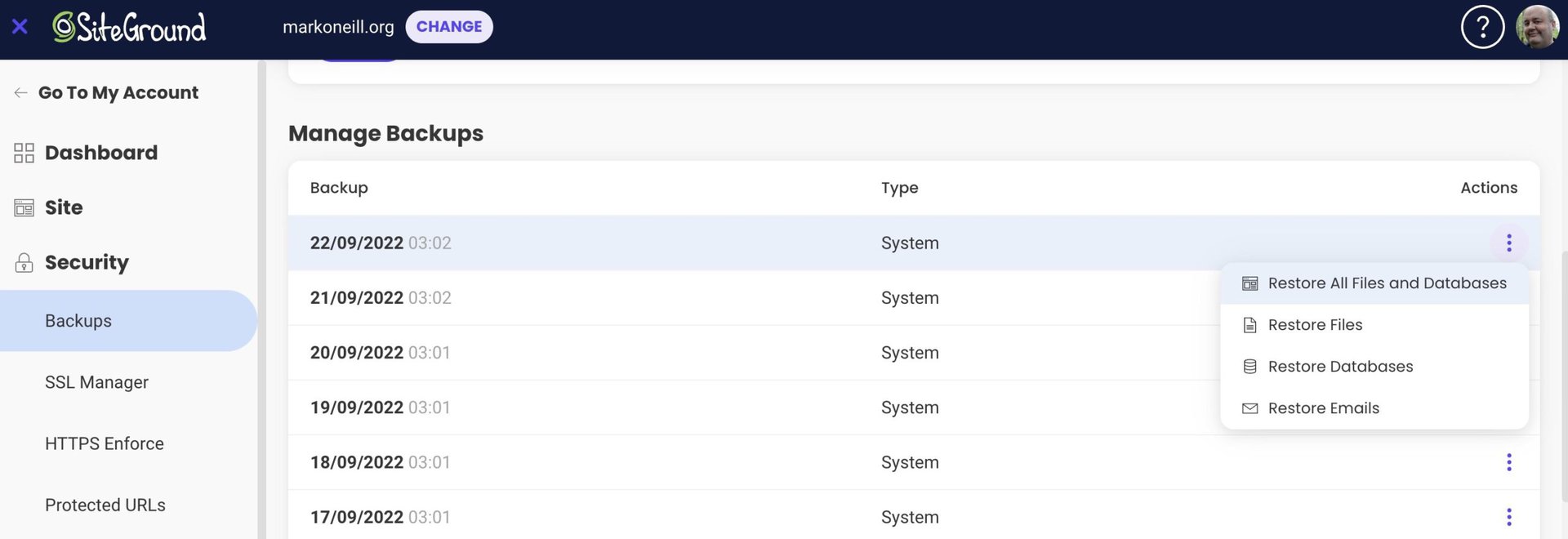
The best solution, by far, for keeping regular backups of your WordPress site is if your hosting service does it for you automatically. Most big-name hosting companies offer this service for free as part of your hosting package. Just log into your hosting account and see if they offer this service. Or call their customer support number and ask.
The best thing about your hosting service doing it is:
- It’s fully automated and done at the same time every day. So you don’t have to worry about forgetting to do it.
- The backups sit on their servers. So you don’t have to worry about paying for cloud storage, accidentally deleting important files, etc.
- They offer an easy website restore process. It’s pretty much one click and then leave it to rebuild itself. You don’t have to mess about reconstructing databases and the like. Your website can be back online in as little as 10 minutes.
- It’s usually free as part of your hosting package. So you’d be silly not to take advantage of it.
Backup WordPress using plugins
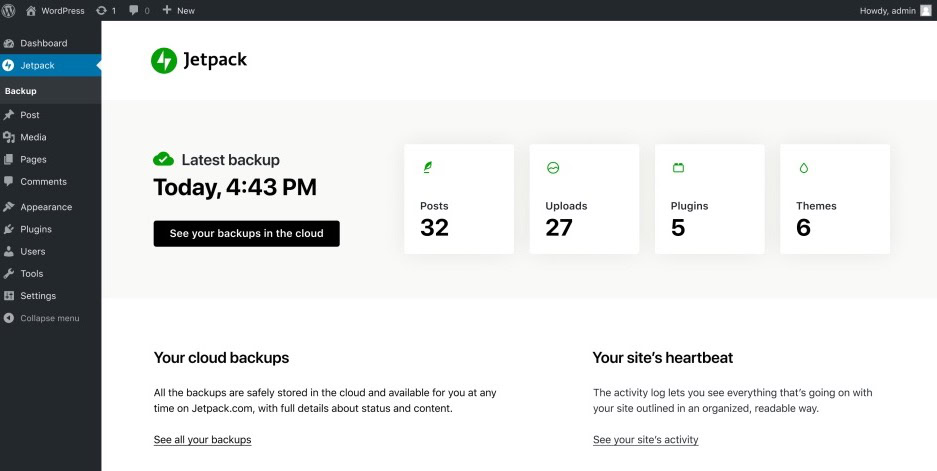
If your web company doesn’t offer a backup service, you can run your backups through a third-party backup service instead. For this, I recommend JetPack Backup, which is extremely affordable. There are two plans, the cheapest of which is $10 per month — although you have to pay annually. They take the sting out of it by giving you a 50% discount in the first year.
JetPack Backup used to be called VaultPress and worked the same way as a hosting service backup would. Now, they’ve moved to a plugin solution. The plugin keeps your website backed up to JetPack servers every time you save something, and a restore button enables you to roll the site back to a previous version.
Even if your hosting company does offer a backup service, it’s still worth considering doing something like JetPack Backup. If someone has hacked into your website, your hosting account could also be compromised. Therefore, having another backup in an off-site location might prove to save the day.
Updraft Plus
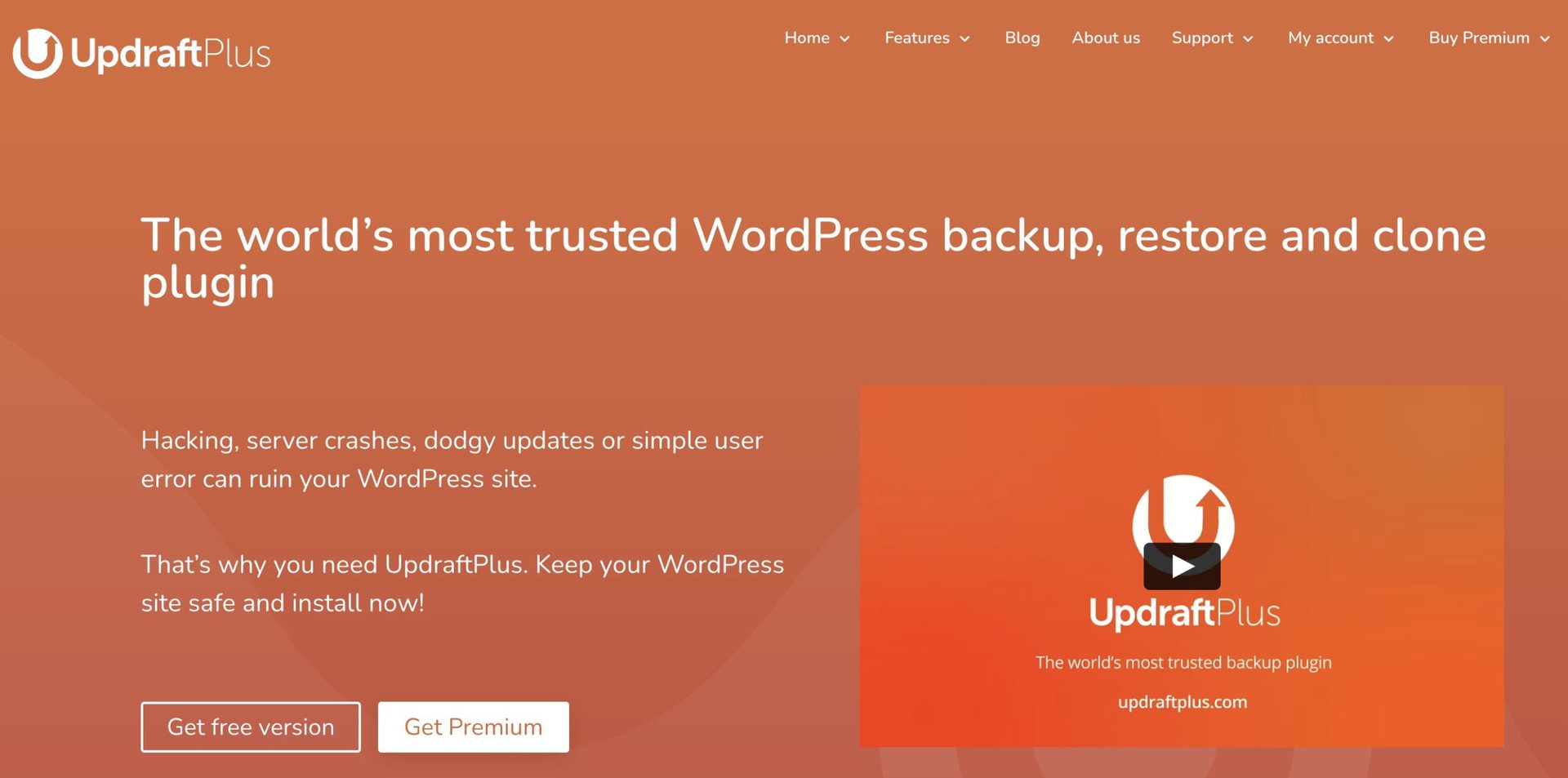
Another excellent WordPress backup plugin is Updraft Plus. This one operates a little differently in that it is a free plugin that enables you to make automated backups to a cloud storage service, such as Dropbox, Google Drive, or Amazon S3.
Although the plugin works perfectly, there are some things to bear in mind here.
- You have to pay to ensure that your cloud storage account is always active and has the required amount of space to handle all the files. As your website grows, so too do your cloud storage bills. Google Drive is quite affordable, but Dropbox? Not so much.
- You need to use two-factor authentication on your cloud storage account to stop anyone from hacking in and compromising the files.
- You are completely reliant on the cloud hosting service. If they go down or go out of business, your backups will be gone.
Therefore, you should use this as a backup to the backup. Nice to have, but not the sole backup available.
Backup WordPress manually
The last possibility to back up your WordPress site — and probably the most difficult, tedious, and time-consuming — is to do it yourself manually. Then again, there are probably lots of people who would consider this to be an enjoyable hobby.
The cons, though, are quite a few in number.
- You can easily forget to do it one day.
- You can make a mistake in the backup, which can ruin the entire thing.
- It’s time-consuming.
If this doesn’t put you off, read on.
Backing up your WordPress website manually using cPanel
Log in to your cPanel. This is an area in your hosting account (you may have phpMyAdmin instead.) Go to Files >File Manager.
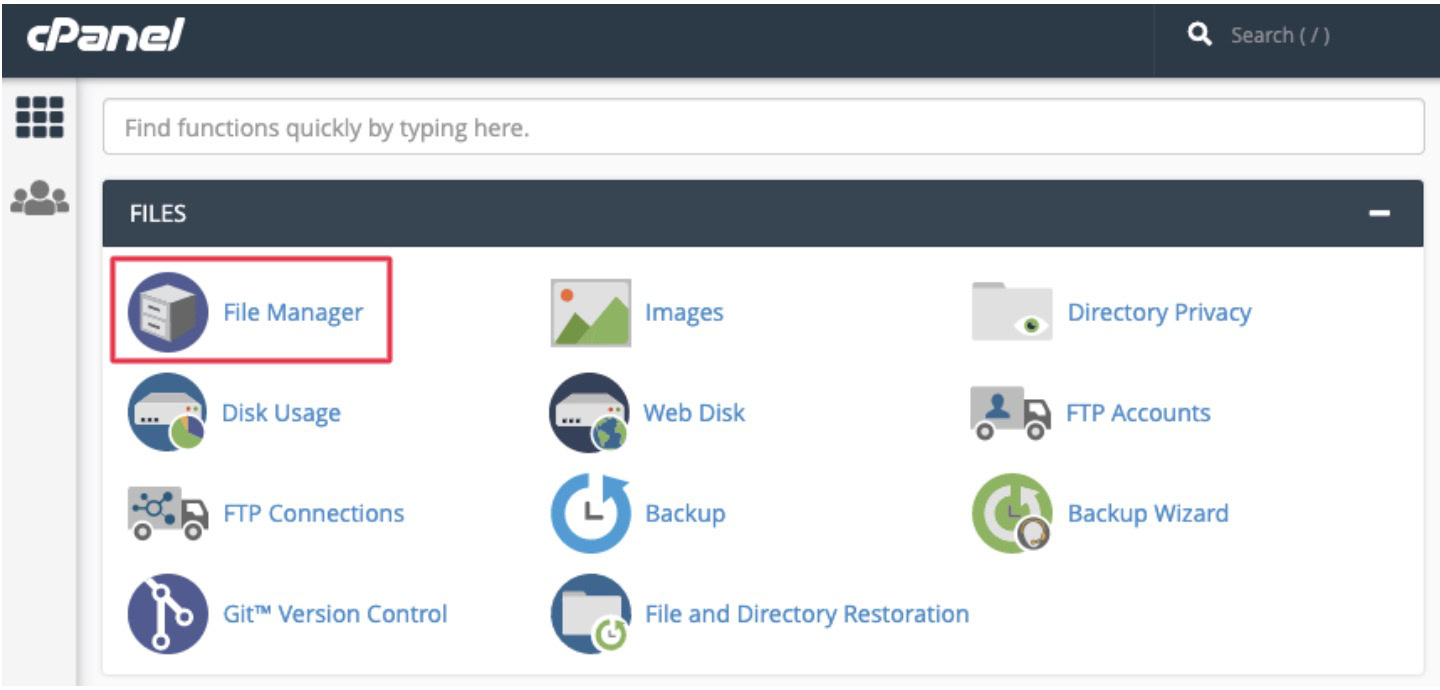
On the left panel, click the public_html folder and expand the folder by clicking the + symbol. Select the folder with your website’s name. Right-click the website’s folder and select Compress.
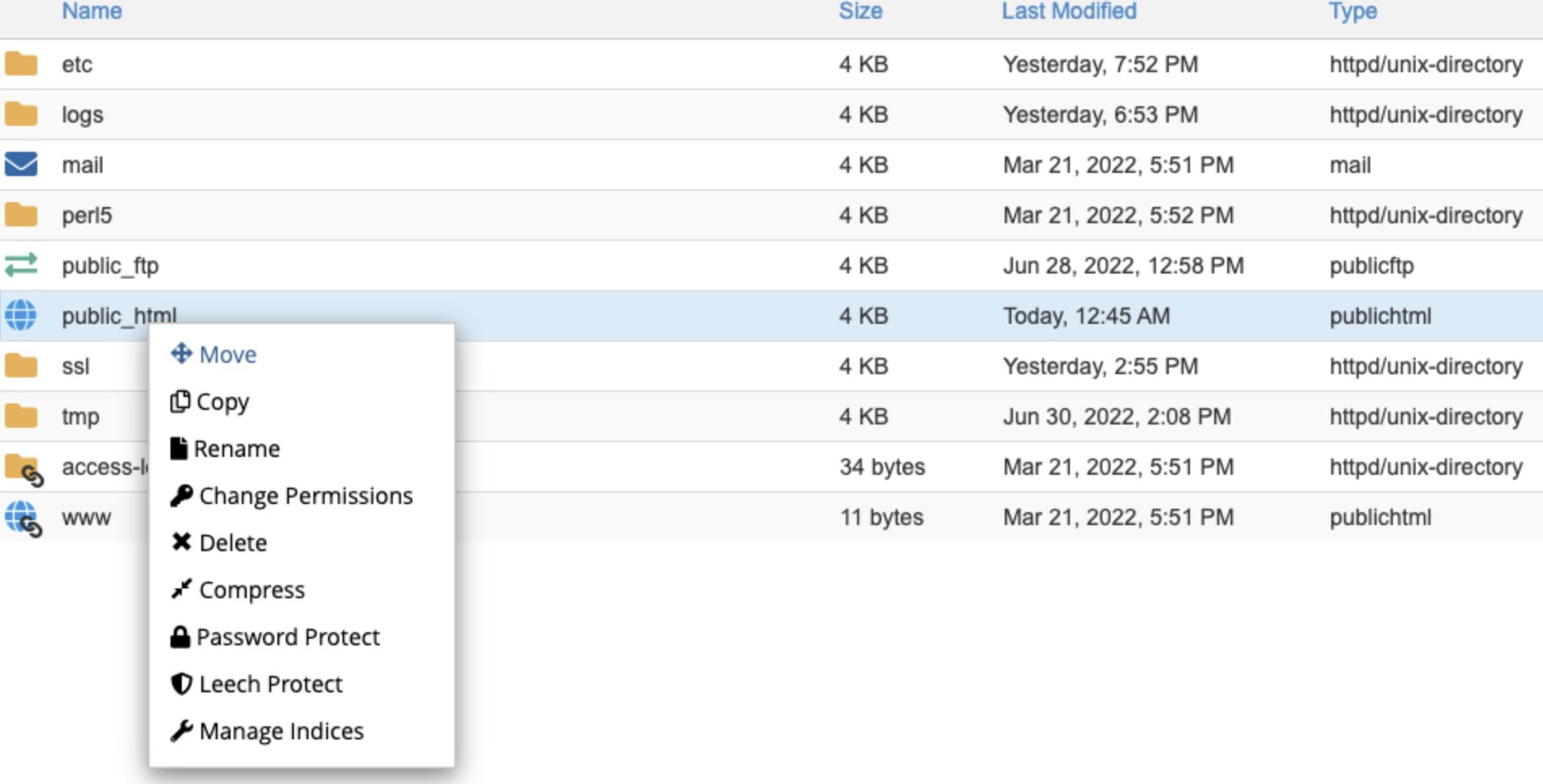
Click Zip Archive > Compress File(s).
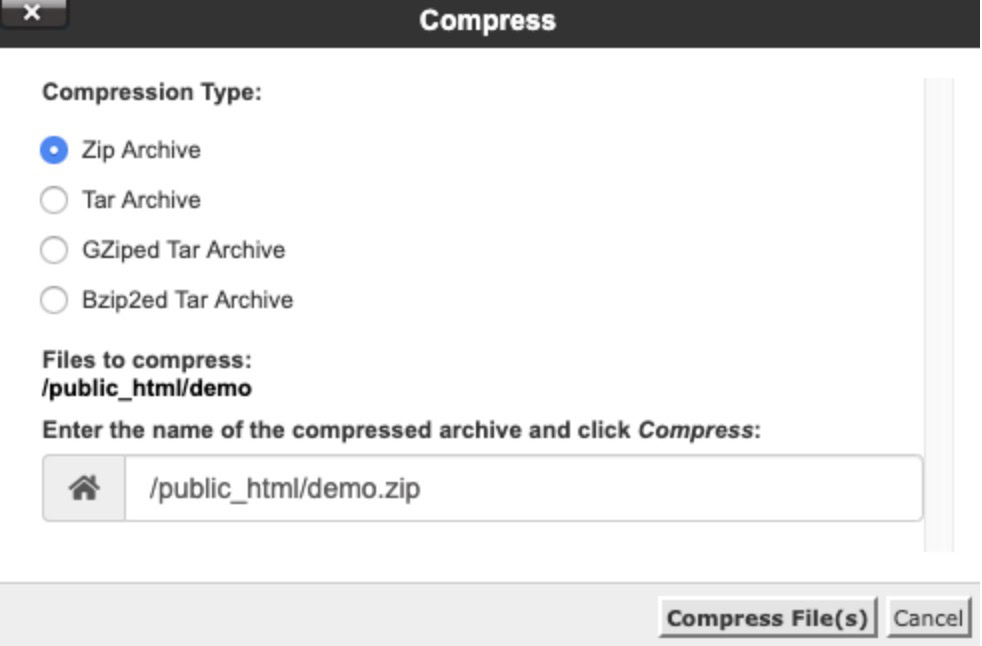
Backing up your WordPress website manually using FTP
The second method of manually backing up your WordPress website is by using FTP. This involves an FTP client such as FileZilla or CyberDuck (to name two.) Log into your website via FTP and download all your files in the public_html folder. When that’s done, zip them all into one folder for easier storage.
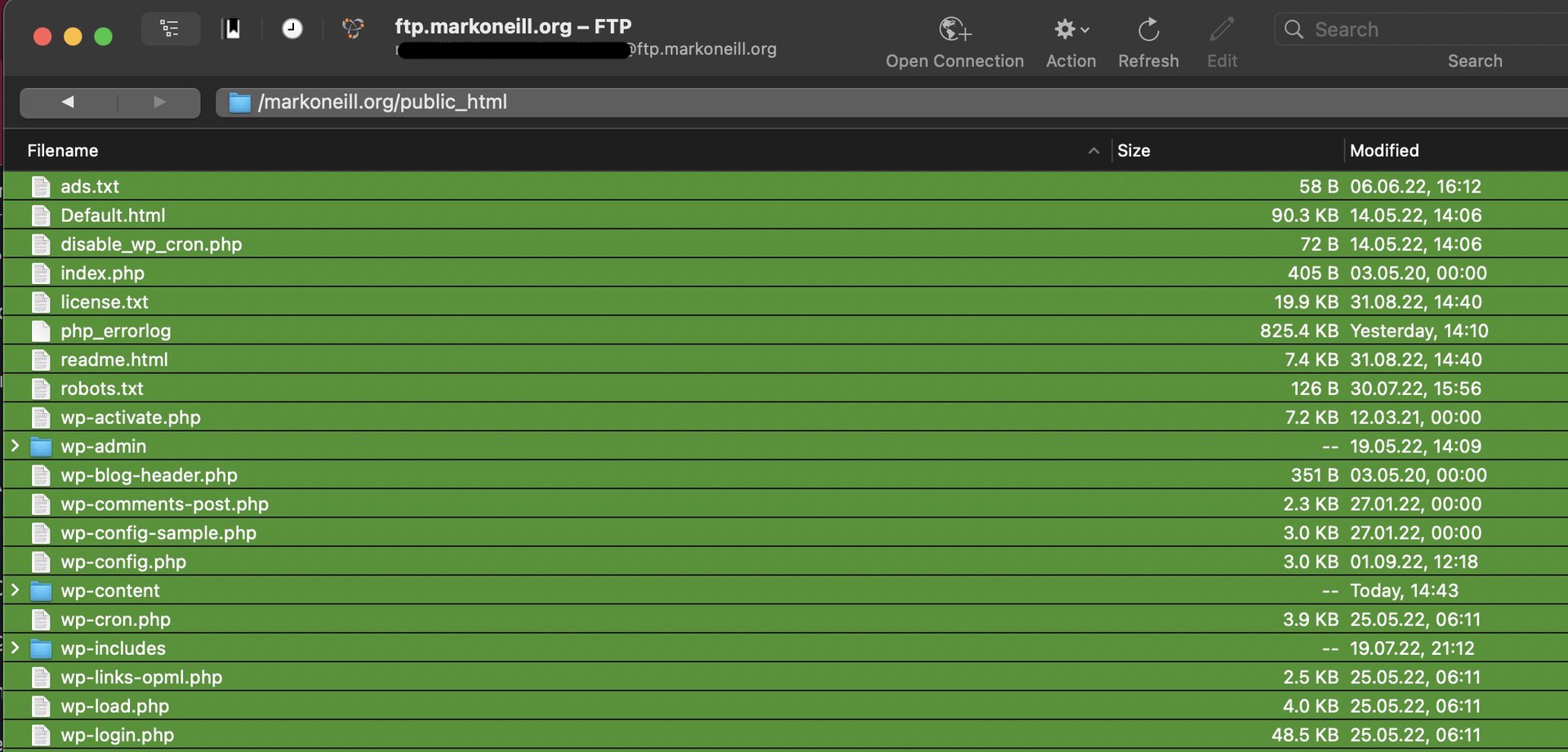
Now go into phpMyAdmin in your web hosting panel. Here, you need to back up your WordPress database. If you only have one site, there will only be one database. But if you have multiple websites, you will have to see which one belongs to which site. When you’ve got it, click it, then click the Export tab.
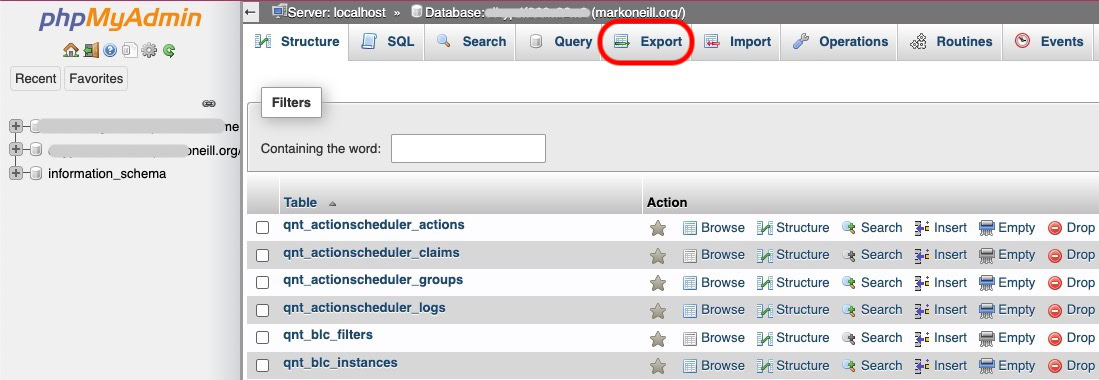
Select the Quick method and SQL for the format. Then, click Go to back up your database file.
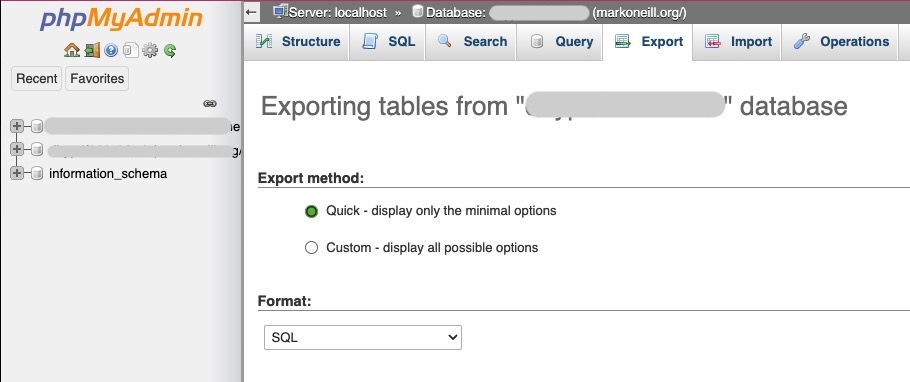
Read more: How to duplicate a post or page in WordPress
FAQs
No, there is no free integrated backup. The closest is a backup service offered by JetPack, which is owned by WordPress. But you must pay for JetPack.